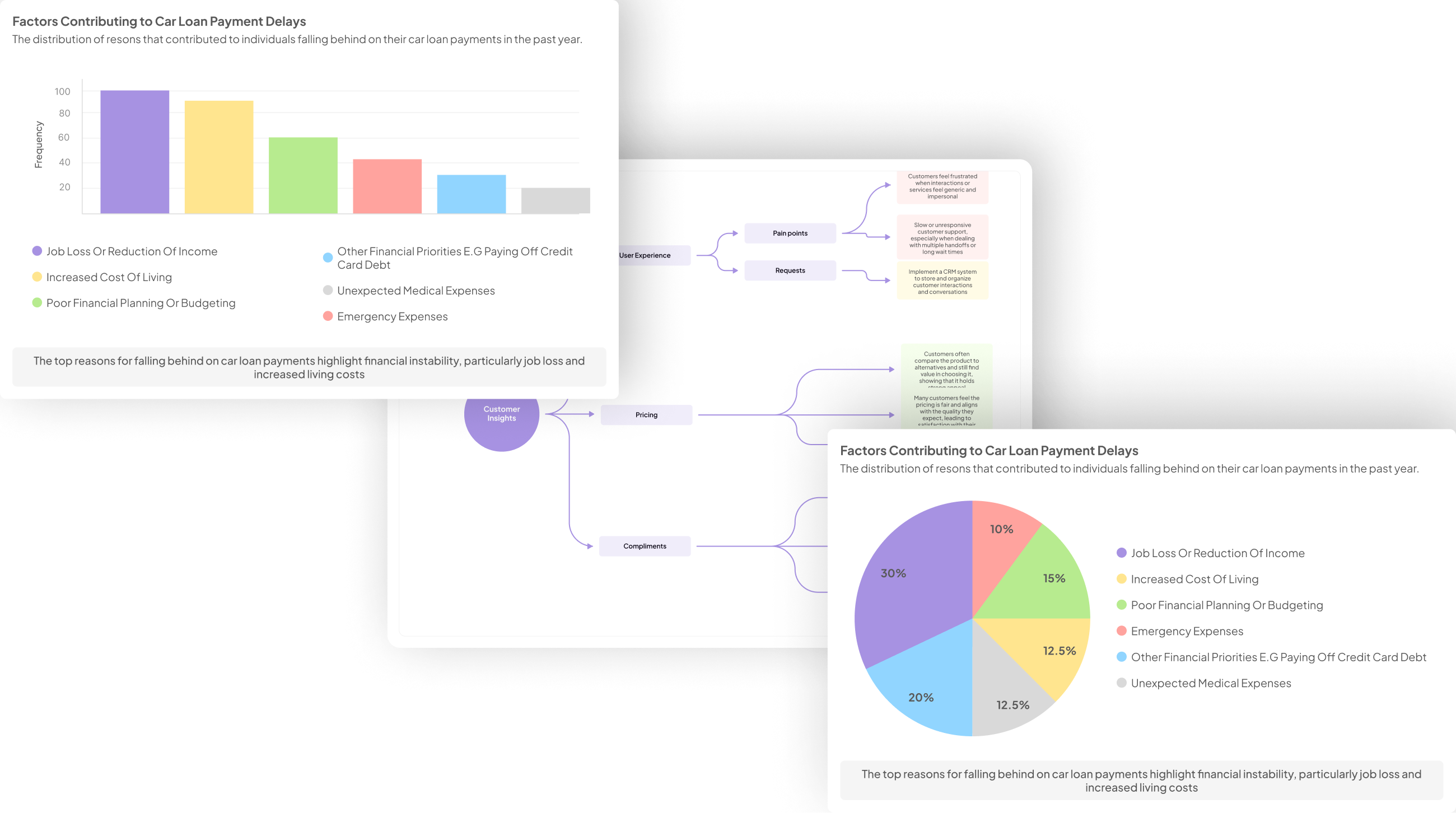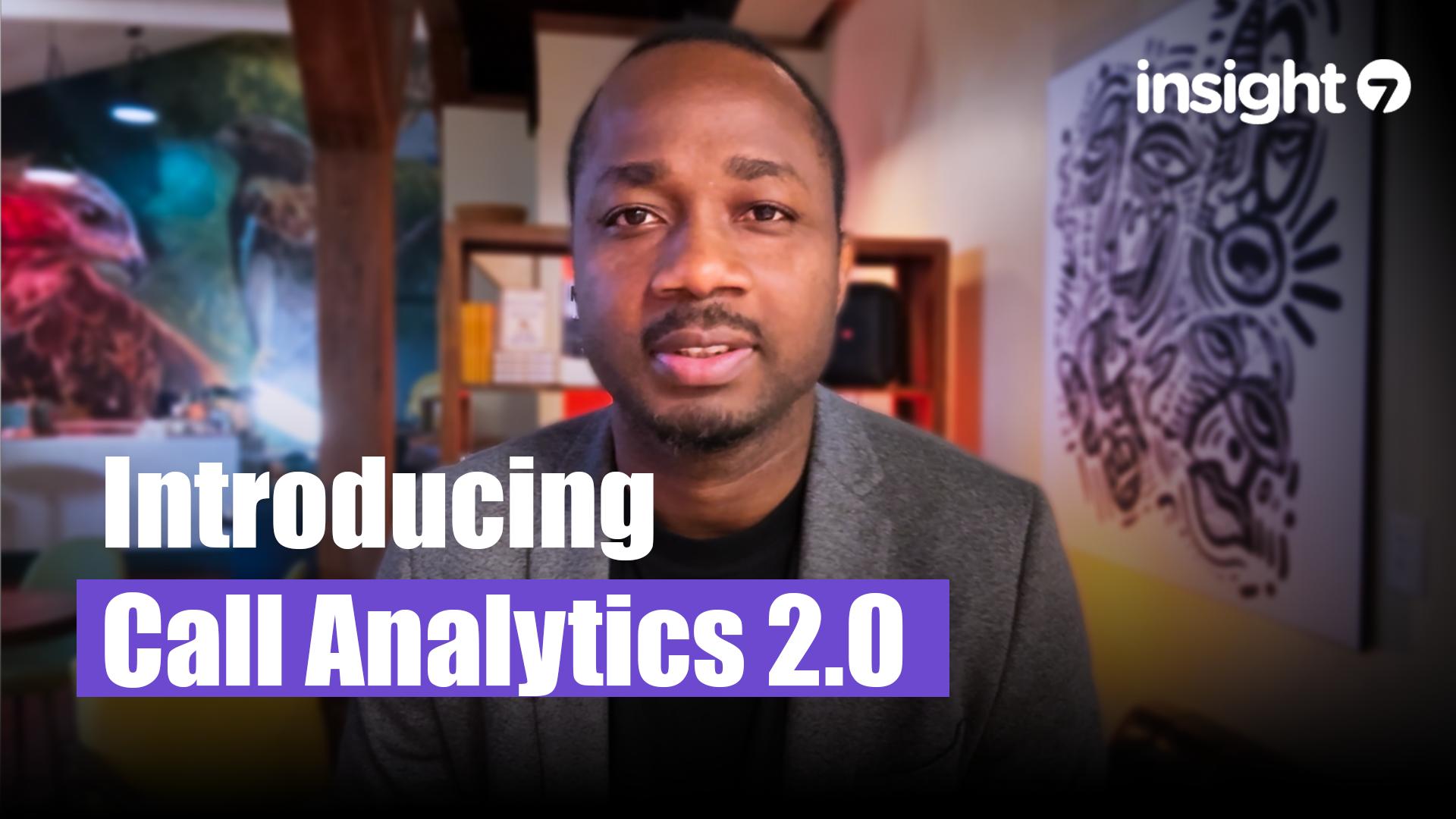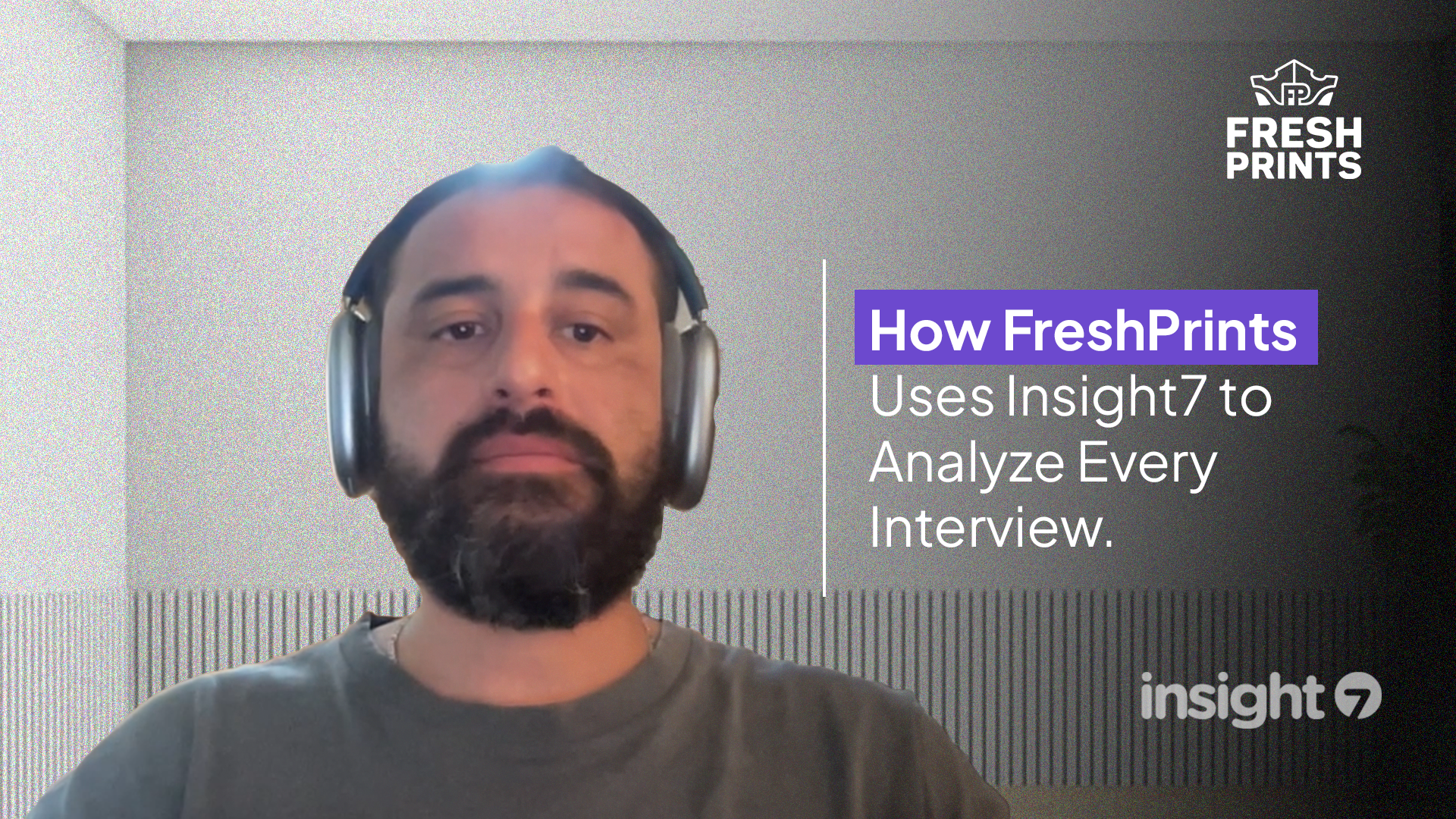How to analyze themes from expert interviews
-
Bella Williams
- 10 min read
In the realm of qualitative research, expert interviews serve as a valuable resource for gaining insights into complex topics. This section introduces Theme Extraction Analysis, a systematic approach to unraveling significant patterns from these conversations. By effectively identifying recurring themes, researchers can draw meaningful conclusions that influence decision-making processes and strategic planning.
Theme Extraction Analysis involves meticulously transcribing interviews and thoroughly familiarizing oneself with the content. This process allows researchers to discern the essential issues and sentiments expressed by experts. As you delve deeper into theme extraction strategies, you'll discover methods for coding responses, categorizing findings, and ultimately synthesizing diverse insights into cohesive themes that reveal the overarching narrative of the discussions.
Generate visualizations from your qualitative data. At Scale.

Understanding Theme Extraction Analysis
Theme Extraction Analysis plays a crucial role in deriving insights from expert interviews. It involves systematically dissecting qualitative data to identify prominent patterns and themes that emerge from discussions. This analysis allows researchers to capture the essence of the conversation while focusing on recurring ideas that resonate with the study's objectives.
To conduct effective theme extraction, it is essential to follow specific guidelines. Start with thorough transcription of the interviews, which lays the groundwork for analysis. Then, engage in initial coding, where segments of text are categorized based on their meaning. The final stage involves identifying overarching themes that encapsulate the interviewees’ perspectives. Such a structured approach not only enhances reliability but also ensures that critical insights are not overlooked, leading to informed decision-making and actionable outcomes.
The Importance of Theme Extraction Analysis in Interviews
Theme extraction analysis plays a vital role in interviews, providing a structured approach to uncovering insights from conversations. By systematically examining responses, analysts can identify recurrent themes that reflect shared experiences or problems among interviewees. This process not only highlights key pain points but also helps build a comprehensive understanding of the subjects being discussed.
Conducting an effective theme extraction analysis involves several integral components. First, it aids in summarizing complex information, allowing researchers to present findings clearly. Secondly, identifying themes facilitates deeper analysis of underlying issues, enabling the development of targeted solutions. Lastly, the insights derived from this analysis can significantly inform decision-making and strategy within various fields. By recognizing the significance of theme extraction analysis, professionals can enhance their ability to glean actionable insights from qualitative research, ultimately leading to more informed and impactful outcomes.
Key Concepts in Theme Analysis
To understand key concepts in theme analysis, it is essential to grasp what constitutes a theme. Themes represent the underlying ideas or patterns that emerge from qualitative data, such as expert interviews. Effective theme extraction analysis involves identifying these themes to draw meaningful insights. This process typically begins with gathering data through interviews, followed by transcribing and organizing the materials for review.
In theme analysis, it’s valuable to approach the data with a set of guiding concepts. First, initial coding is crucial; it allows for categorization of relevant comments or quotes. Second, identifying patterns helps highlight recurring themes across interviews, which often reveal shared pain points or insights. By focusing on these elements systematically, analysts can develop reports that summarize the insights gleaned from the data and present them effectively to stakeholders. This process not only facilitates understanding but also aids in decision-making informed by expert perspectives.
Evaluate Performance on Customer Calls for Quality Assurance.
Steps to Conduct Theme Extraction Analysis
To successfully conduct a Theme Extraction Analysis, one must begin with transcribing the expert interviews. This foundational step transforms audio or video content into text, allowing for a thorough examination of the spoken words. Familiarization follows, whereby you immerse yourself in the transcripts. This process helps to absorb the nuances and context within the dialogue, allowing for a richer analysis.
Next, initial coding and categorization are essential. This involves tagging sections of the text with relevant codes that capture key ideas or recurring concepts. As you progress, identifying patterns and themes begins. Look for connections among the codes, noticing how they aggregate into broader themes. By systematically following these steps, you can unveil the underlying messages in expert interviews, transforming raw data into actionable insights.
Step 1: Transcription and Familiarization
Transcription and familiarization are crucial first steps in the process of Theme Extraction Analysis. This stage begins with transcribing audio recordings of expert interviews into text. Accurate transcription ensures that every word is captured, which is vital since subtle nuances in speech can reveal essential themes and insights. Aim for a high level of precision in your transcription to facilitate effective analysis later on.
Once transcription is complete, familiarize yourself with the content. Read through the transcripts thoroughly to understand the context, tone, and key messages conveyed by the interviewees. During this phase, take initial notes on recurring ideas or sentiments that may emerge. Engaging deeply with the text lays the groundwork for the subsequent steps in the analysis, allowing for a more structured approach to identifying patterns and themes. This detailed understanding will significantly enhance the clarity of your findings in Theme Extraction Analysis, ensuring that you capture the richness of the information shared by your experts.
Step 2: Initial Coding and Categorization
Initially, coding and categorization transform raw data from expert interviews into meaningful insights. This process begins by reviewing transcriptions to identify recurring topics or concepts. You will break down the data into smaller segments, labeling each with codes that encapsulate its essence. These codes can be words or short phrases that represent the main ideas discussed.
Next, you categorize these codes into broader themes. This thematic organization helps visualize patterns within the data, providing valuable context and clarity. For effective theme extraction analysis, ensure your coding reflects the nuances of the expert's insights. By iterating on this step, you can refine your categories, leading to a more comprehensive understanding of the themes at play. Embrace this stage as a foundational element that paves the way for deeper analysis in subsequent steps.
Step 3: Identifying Patterns and Themes
In this phase of your analysis, you will concentrate on identifying patterns and themes that emerge from the expert interviews. Begin by examining the transcripts closely, paying attention to recurring phrases or ideas. A systematic approach is essential, as consistent observations across discussions often highlight underlying themes. For example, if several experts mention a specific pain point, it likely indicates a prevalent concern within your target audience.
Next, utilize tools that allow you to organize your findings visually. Creating a matrix can help summarize the information succinctly. By doing this, you can easily see which themes resonate most among the respondents. For instance, if resource allocation is mentioned frequently, it signals a significant theme that warrants further investigation. As you move forward, identify connections between themes, which can reveal insights into broader issues affecting the market. This structured approach will enhance your Theme Extraction Analysis significantly.
Top Tools for Theme Extraction Analysis
When embarking on theme extraction analysis, selecting the right tools greatly enhances the quality of your insights. Various software options can streamline your processes, making data review and theme identification more manageable and efficient. Here are some of the top tools you can consider for effective analysis.
1. Insight7: Known for its user-friendly interface, Insight7 allows you to upload recordings and easily transcribe them into actionable data. Its built-in evaluation features enable users to analyze themes efficiently.
2. NVivo: This powerful tool specializes in qualitative data analysis. NVivo supports extensive coding, which is vital for identifying various themes across different responses in interviews.
3. ATLAS.ti: ATLAS.ti provides robust tools for organizing and analyzing qualitative data. It allows users to visualize themes through graphs and networks, enhancing comprehension of the results.
4. Dedoose: Ideal for mixed-methods research, Dedoose combines qualitative and quantitative data analysis. Its collaborative features enable team members to work together seamlessly.
5. MAXQDA: This tool focuses on qualitative and mixed-methods research, offering diverse capabilities for coding and theme extraction analysis.
By utilizing these tools, researchers can streamline the theme extraction process, ultimately leading to more reliable and actionable insights from expert interviews.
insight7
Theme Extraction Analysis is crucial in transforming expert interviews into actionable insights. This process begins with systematically identifying recurring themes within the dialogue. By doing so, you can distill vast amounts of qualitative data into clear, coherent insights that drive informed decision-making. Many organizations collect customer feedback yet struggle to effectively analyze it. Streamlining this analysis through theme extraction can mitigate inefficiencies and uncover valuable information.
In practice, the steps involved include transcription, initial coding, and the subsequent identification of patterns. Transcribing interviews provides a text-based framework for analysis, allowing for better focus on key insights. Initial coding helps categorize information, making it easier to recognize trends and themes. Ultimately, understanding these patterns ensures that valuable feedback is not lost in a sea of data. Employing a structured approach to Theme Extraction Analysis fosters a deeper understanding of customer needs and enhances strategic planning.
NVivo
NVivo offers a powerful environment for Theme Extraction Analysis, allowing researchers to analyze qualitative data efficiently. It facilitates the collection and organization of interview transcripts into projects, making it easy to draw insights from various sources. Users can quickly upload audio files and transcribe them directly within the software, streamlining the data preparation process.
The software's project features enable the creation of custom matrices to compare data across multiple interviews. This eliminates the need for manual sorting, providing a visual representation of key themes and patterns. Users can pose targeted questions, such as what customers say about a specific product, and NVivo will compile relevant quotes, making it seamless to identify trends. By leveraging this tool, researchers can uncover rich insights from expert interviews, enhancing their understanding of complex themes.
ATLAS.ti
ATLAS.ti offers a robust platform for conducting Theme Extraction Analysis, particularly if you're utilizing data from expert interviews. This software streamlines the process of organizing and analyzing qualitative data, allowing researchers to uncover meaningful patterns and insights efficiently. By creating designated projects, users can upload interviews, transcribe audio, and compile notes, enabling a comprehensive examination of thematic elements.
One of the standout features is the matrix tool, which allows users to pose specific questions related to their research objectives. For instance, you can identify recurring feedback about a product by generating a table that gathers responses from multiple interviews. This not only reveals trends but also enhances understanding by summarizing results visually. Overall, ATLAS.ti is an invaluable asset for qualitative researchers aiming to bring clarity and structure to their Theme Extraction Analysis.
Dedoose
Dedoose provides an effective platform for Theme Extraction Analysis, making it easier to sift through data from expert interviews. This tool is particularly helpful for researchers who need to analyze qualitative data efficiently. By combining qualitative and quantitative research techniques, it allows users to visualize themes and patterns that may emerge during analysis.
To begin, users can upload audio or text data and utilize the software’s robust coding feature. This process simplifies the identification of recurring themes, enabling a more structured analysis. Next, built-in visualization tools present the data in accessible formats, enhancing clarity. Lastly, Dedoose offers collaboration features, allowing teams to work together seamlessly. These aspects of Dedoose streamline the entire analysis process, turning complex interview data into actionable insights.
Engaging with Dedoose can greatly enhance your capability to extract and analyze themes, ultimately leading to deeper understanding and impactful findings from your expert interviews.
MAXQDA
MAXQDA is a powerful tool designed for qualitative data analysis, making it particularly useful in the realm of Theme Extraction Analysis. This software allows researchers to efficiently analyze interviews, enabling them to uncover emerging themes and insights from vast amounts of qualitative data. With an intuitive interface, users can create projects that compile interview transcripts and related files, facilitating a comprehensive exploration of the data.
To effectively utilize MAXQDA for Theme Extraction Analysis, it is essential to follow key steps. First, import your files into a new project, allowing for organized access to your data. Then, utilize built-in coding features to categorize and analyze specific quotes or themes present in the transcripts. Lastly, employ visualization tools that summarize findings, allowing you to observe patterns and trends in your data quickly. This structured approach not only saves time but also enhances the depth of your analysis, ultimately leading to more informed conclusions.
Conclusion: Mastering Theme Extraction Analysis in Expert Interviews
Mastering theme extraction analysis in expert interviews enables researchers to extract valuable insights from conversations and data. By carefully analyzing themes, one can identify recurring patterns and significant trends that inform decision-making processes. This approach is crucial for understanding complex subjects and synthesizing expert knowledge effectively.
In summary, the mastery of this technique can transform raw interview transcripts into actionable insights. By utilizing structured methodologies and appropriate tools, researchers can distill essential information that drives strategic initiatives. Engaging in this analysis not only clarifies expert opinions but also enhances the overall understanding of the subject matter, promoting informed choices and innovative solutions.







